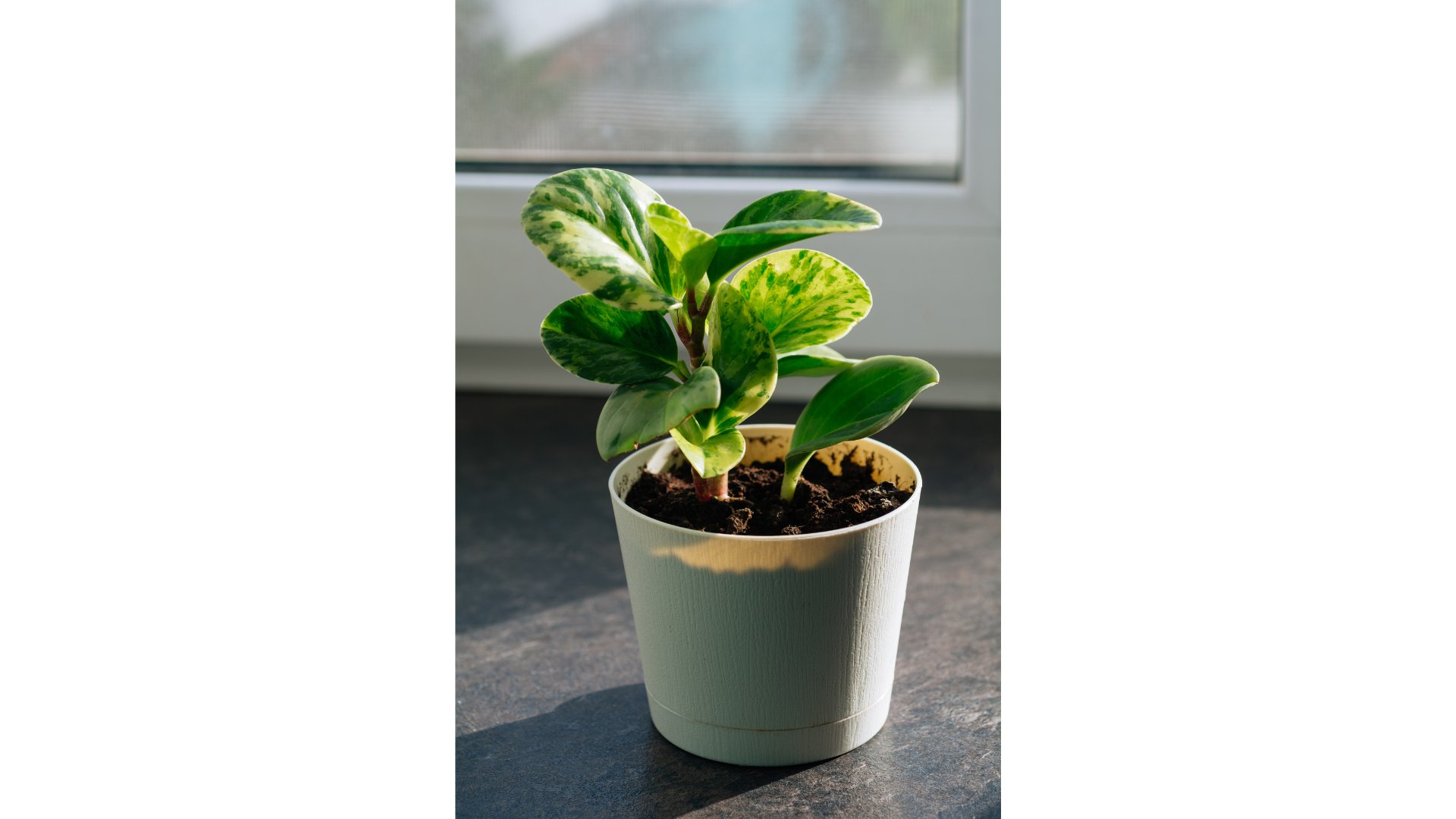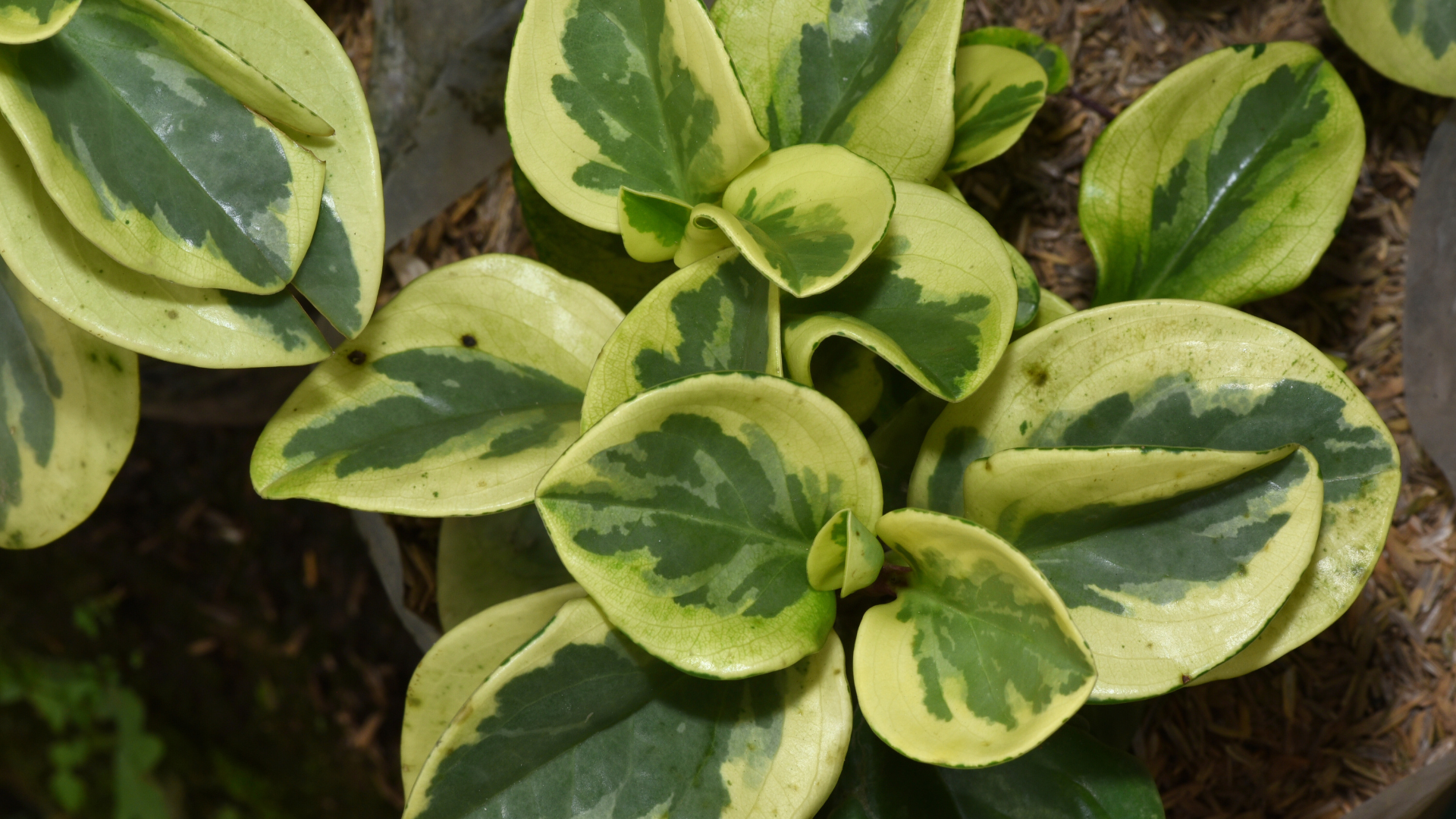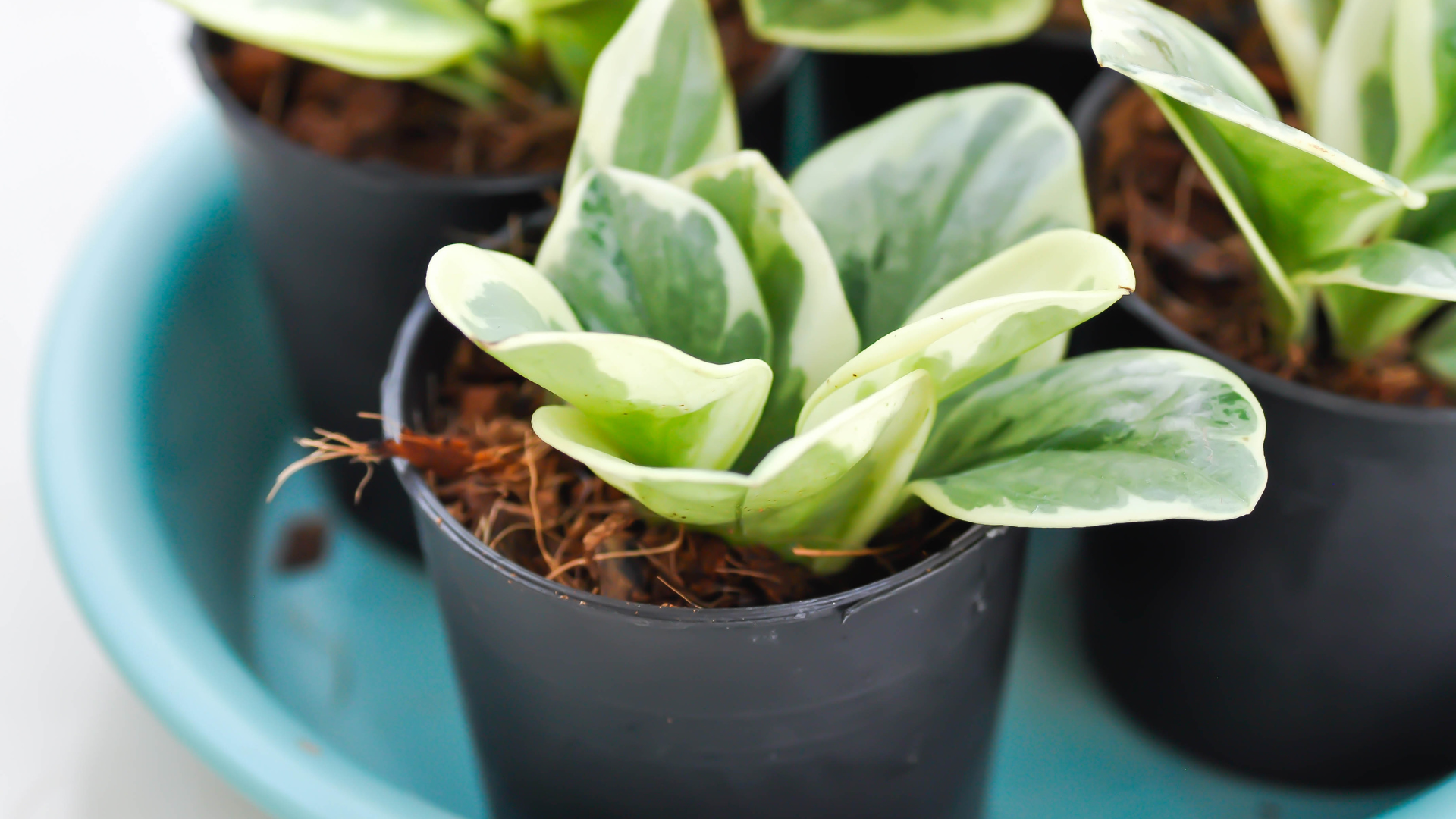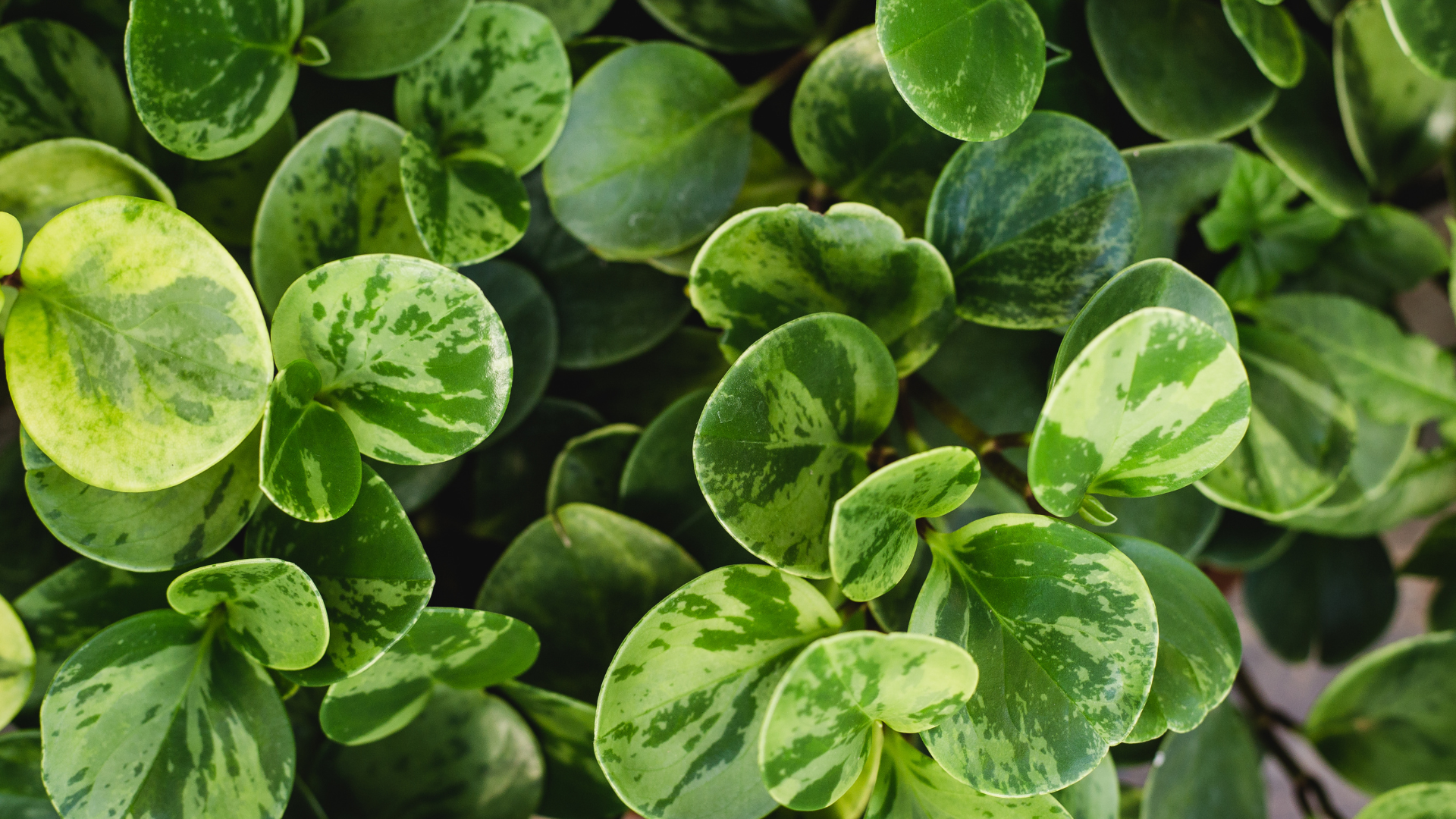Baby Rubber Tree Plant Guide
Your complete guide to nurturing a thriving Baby Rubber Tree
Your Plant's Story
This charming Baby Rubber Tree started its journey as a cutting from one of our beloved mother plants in our greenhouse. Each plant carries the resilient genetics and compact growing spirit of its parent, carefully propagated and nurtured until ready to bring tropical warmth to its new home.
The Magic: Despite its name, this beauty isn't actually a rubber tree at all! It's a Peperomia obtusifolia from the pepper family that earned its nickname because of those thick, glossy leaves that store water like nature's own little reservoirs. The best part? It's practically impossible to kill and forgives your plant parent mistakes.
From South American rainforests to your space: Your Baby Rubber Tree's ancestors evolved growing on the forest floor in Central and South America, developing their succulent-like leaves and drought tolerance to thrive in dappled light beneath the canopy.
Hand-selected for you: Every Dirt Witch Baby Rubber Tree is chosen for its robust health, glossy leaf development, and that perfect compact bushiness that makes them ideal for any space from your desk to your bookshelf.
At a glance
Pet Safe
Safe for curious cats, dogs, and little ones
Medium to Bright Indirect Light
Think bright living room or east-facing window - loves good light but no harsh sun
Beginner-Friendly
Nearly impossible to kill with thick, water-storing leaves that forgive neglect
Plant Overview
Essential Care
Light
Perfect placement: Medium to bright indirect light for 6+ hours daily - this keeps those leaves glossy and prevents stretching
Best spot: East or north-facing window, or a few feet back from a south window where the light feels bright but gentle
Avoid: Direct afternoon sun (will burn those beautiful thick leaves) or very dim corners (growth slows dramatically)
Low light tolerance: Can survive in offices with fluorescent lighting, making it perfect for workspaces
Perfect light signs: Compact, bushy growth with thick, glossy leaves that feel substantial to the touch
Watering
Finding the rhythm: This little water-storer is very forgiving - water when the top inch of soil feels dry to the touch
Spring/Summer: Every 1-2 weeks, depending on light and humidity
Fall/Winter: Every 2-3 weeks as growth naturally slows
Pro tip: Those thick leaves store water, so when in doubt, wait another day or two - they'd rather be slightly dry than soggy
Signs it needs water: Leaves start to feel less plump and may begin to wrinkle slightly
Signs of overwatering: Musty soil smell, yellowing leaves, or soft/mushy stems - let it dry out completely
Humidity
Creating the vibe: 40-60% humidity is perfect, but they're surprisingly adaptable to average home humidity
Easy ways to boost humidity:
Place on a pebble tray with water (creates its own little microclimate)
Group with other plants (they love plant communities!)
Occasional gentle misting (avoid getting water trapped in leaf crevices)
Natural humidity lovers: These tropical beauties appreciate extra moisture but won't sulk if your home is on the drier side
Temperature
Comfort zone: 65-75°F (just like you prefer!)
Avoid: Cold drafts, heating vents, A/C units, or anything below 55°F (growth stops and leaves may drop)
Summer care: Can go outside in warm weather, but keep in bright shade - no direct sun
Soil & Feeding
Soil: Well-draining potting mix with good aeration - add perlite to regular potting soil if it seems heavy
Feeding schedule:
Growing season (Spring/Summer): Monthly with diluted liquid fertilizer (half strength)
Dormant season (Fall/Winter): No feeding needed - they rest like we do!
Fertilizer type: Balanced liquid fertilizer (like 10-10-10) diluted to half strength
Less is more: These slow growers don't need much food - over-fertilizing can cause more harm than good
Monthly Care Ritual
Every month, create a moment to connect with your compact beauty:
Check soil moisture by sticking your finger into the soil - water when the top inch is dry
Inspect those thick leaves for any tiny visitors (they're generally pest-resistant!)
Gently wipe leaves clean with a damp cloth (keeps them glossy and healthy)
Remove any spent or yellowing leaves that have completed their purpose
Rotate pot 1/4 turn for even growth toward the light
Give it some encouraging words - these plants love positive energy!
Growing season bonus ritual (Spring/Summer):
Offer diluted liquid fertilizer to support steady growth
Check if it needs a slightly larger pot (they like being a bit snug though!)
Consider light pruning to encourage bushier growth
Propagation & Repotting Magic
When Your Plant Needs More Space
Every 2-3 years, or when your plant starts sending these gentle signals:
Roots are peeking out of the drainage holes (they don't mind being cozy, but this means they're ready)
Water rushes straight through without giving the soil a proper drink
Growth has slowed significantly despite good care
Think of repotting as giving your slow-growing friend a refresh - they'll thank you with renewed vigor and even glossier leaves.
The Magic of Making More Plants
Best method: Stem or leaf cuttings (incredibly easy!)
There's something magical about how generous Baby Rubber Trees are with propagation. Here's how to work this green magic:
Stem cutting method:
Cut a healthy stem with 2-3 leaves just below a node
Remove the bottom leaf and let the cutting dry for a few hours
Place in water or directly in moist potting mix
Roots develop in 2-4 weeks (water method shows progress!)
Plant when roots reach 1+ inch long
Leaf-cutting method:
Take a healthy leaf with a bit of stem attached
Let it dry for a day to prevent rot
Plant the stem end in a moist, well-draining mix
Keep warm and humid until new growth appears
Pro tip: These are some of the most reliable plants for sharing with friends - one mature plant can provide multiple cuttings without any stress!
Common Visitors & How to Handle Them
-
The tiny web spinners: Usually show up when the air gets too dry - they're telling you your plant needs more humidity.
Signs: Fine webbing under leaves, stippled appearance, leaves looking dusty
Natural remedy: Increase humidity immediately, a gentle shower for the plant, and neem oil spray if needed
-
The white cotton invaders: These cottony clusters love to hide in leaf joints and stems.
Signs: White, cotton-like clusters where leaves meet stems
Gentle removal: Dab with rubbing alcohol on a cotton swab, or use insecticidal soap spray
-
The silent growth stopper: This succulent-like beauty can't handle consistently soggy soil.
Signs: Yellowing leaves, musty smell, soft stems, black or mushy roots
Prevention: Well-draining soil, proper watering rhythm, good air circulation
FAQ & Plant Wisdom
-
Your plant is thirsty! Those thick leaves store water, but when they start to wrinkle, it's time for a good drink. Water thoroughly and establish a more regular watering routine.
-
Usually this means too much water love!
Check if the soil feels soggy or has a musty smell. Let it dry out completely and adjust your watering schedule.
-
Absolutely!
In summer, they love spending time outdoors in bright shade. Just bring them inside when nighttime temperatures drop below 55°F.
-
This could be dust buildup (easy fix - gentle wipe down) or insufficient light. Move to a brighter spot, and those leaves will regain their lustrous glow.
-
Light pruning of the tips encourages branching and creates that perfect compact, full shape. Spring is the best time for pruning.
-
Variegated varieties need a bit more light to maintain their beautiful patterns. Move it closer to your brightest indirect light source.
-
Yes!
Baby Rubber Trees are naturally slow and steady growers. This makes them perfect for people who want a stable, low-maintenance plant friend.
-
How often should I repot?
Every 2-3 years is plenty. These plants actually prefer being slightly rootbound, so don't rush to upsize the pot.
-
Yes, they are the perfect office plant!
They tolerate fluorescent lighting better than most houseplants, and their compact size fits anywhere.
Still need help?
Having trouble with your Baby Rubber Tree? We are here to help!
Email us at hello@dirt-witch.com with photos of any issues
Send us a DM on Instagram @dirtwitchstudio with your questions
Remember: Baby Rubber Trees are incredibly forgiving plants that reward patience with steady, reliable growth. Trust your instincts, let the soil dry between waterings, and enjoy watching those thick, glossy leaves bring tropical calm to your space!
Happy growing!





